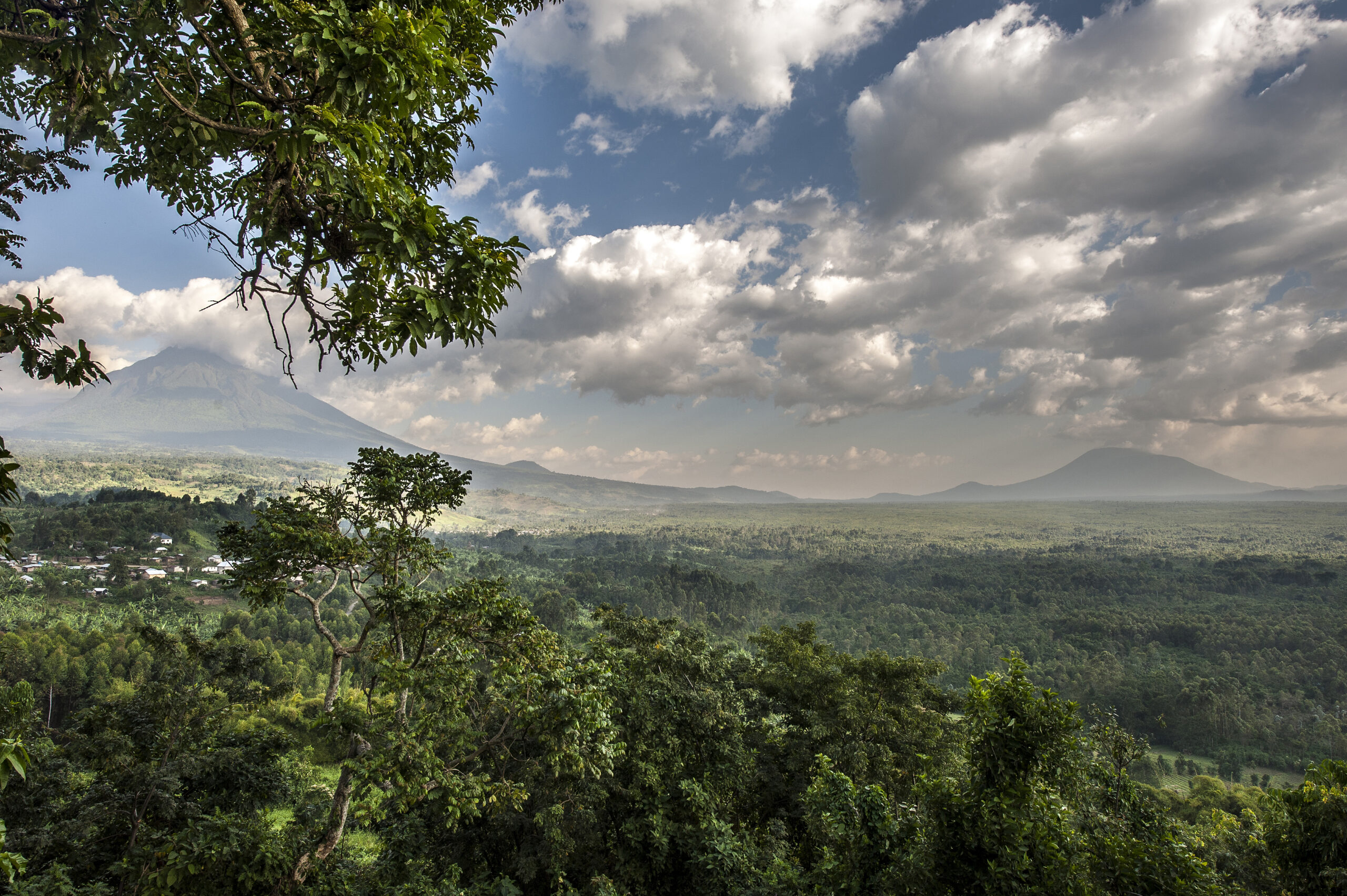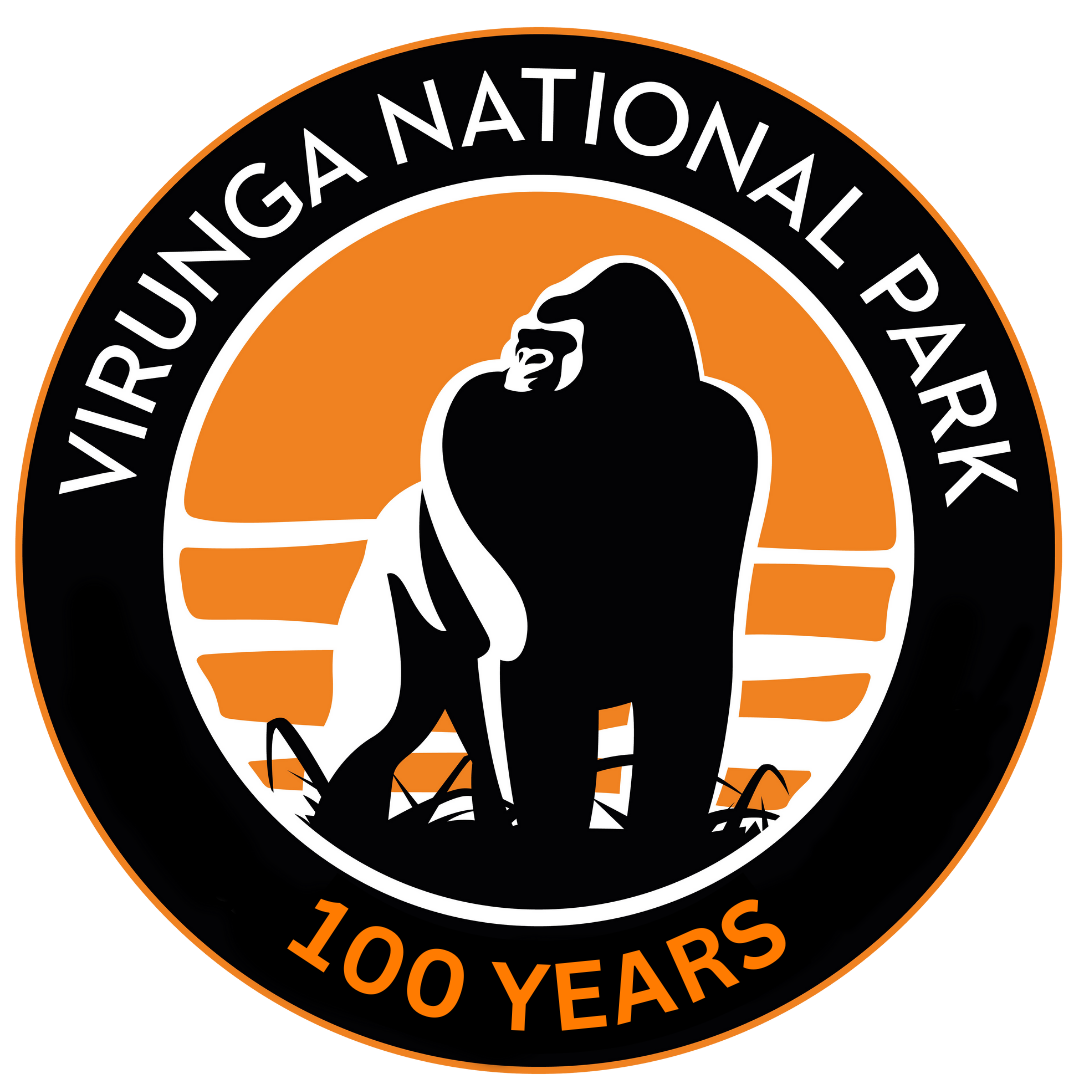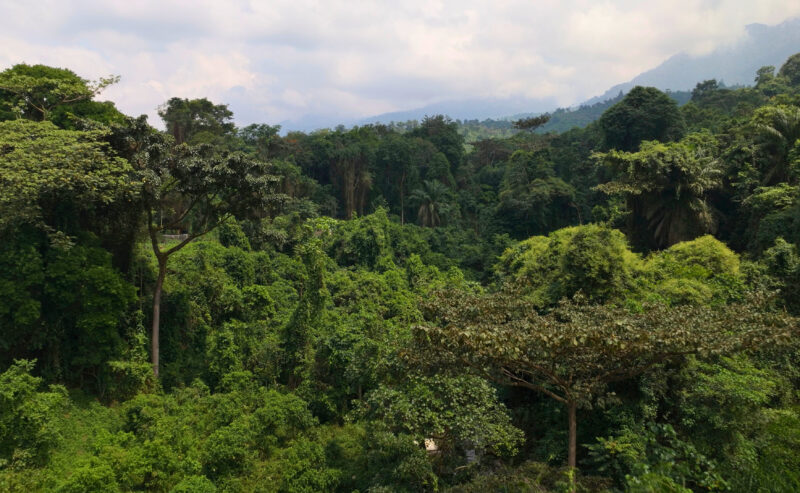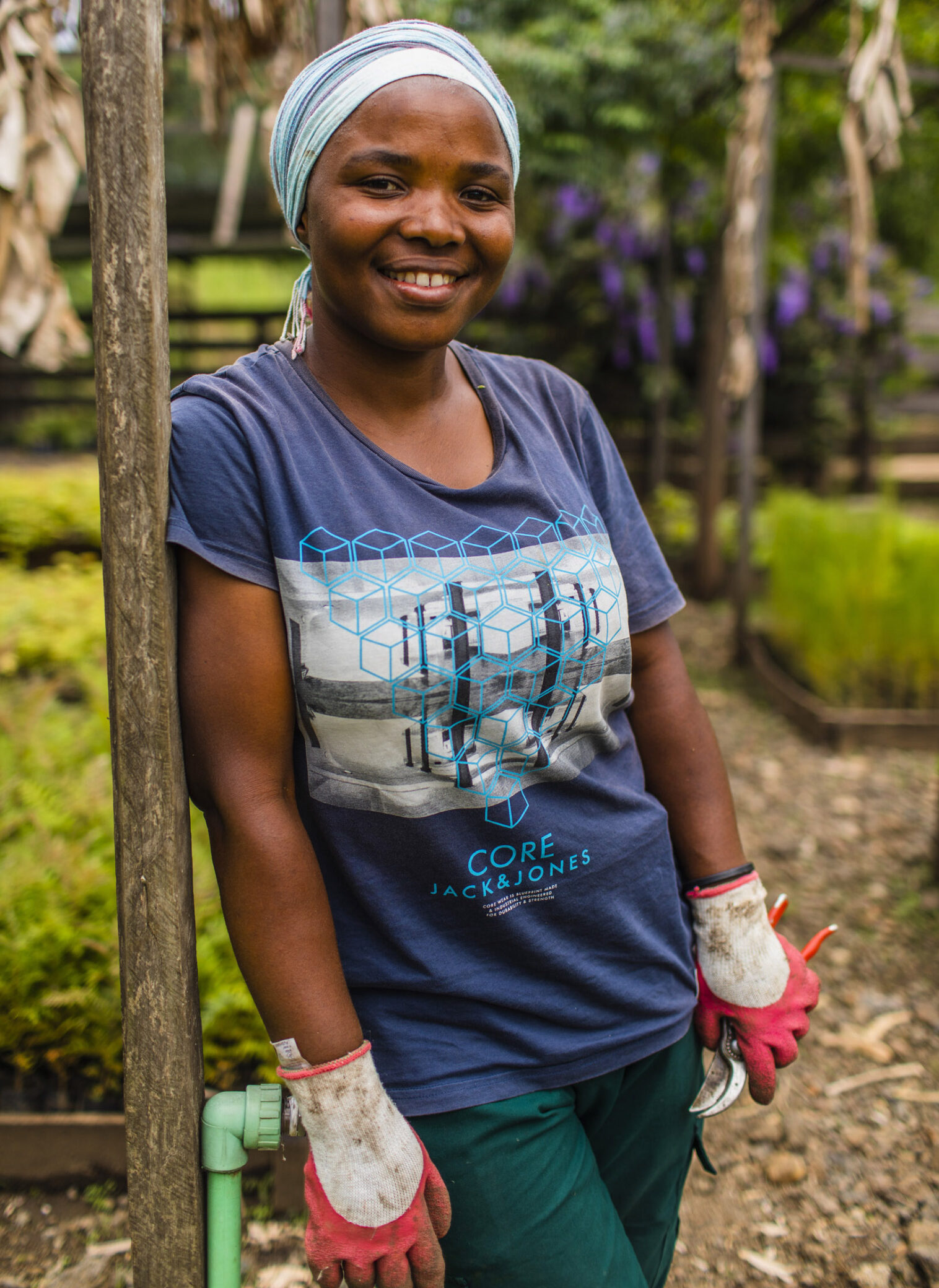In March 2021, Virunga began the restoration of 60 hectares of abandoned former agricultural land in the Mikeno sector. Only recently acquired by the Park, the site offers a real challenge; despite having been used for agriculture, the land is situated high in the mountains at an altitude of 7,500 ft (2,300 m) and spans various difficult-to-access ridges, rocks, and slopes. There is also serious soil degradation to contend with, caused by intensive exploitation through farming.
Forest restoration, in this particular case, is essential for reversing the process of soil degradation, restoring the ecological functionality of the land, ensuring environmental protection, and improving rural livelihoods through the various timber and non-timber forest products that will be available to local communities once the land has recovered and become productive.







Being located in such a densely populated area has put a tremendous strain on the Park’s resources, making it one of the most overburdened in Africa.